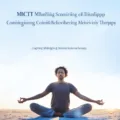What is a Thought Record?
A thought record is a tool commonly used in cognitive behavioral therapy (CBT) to help identify and challenge unhelpful thoughts. The basic premise is that our thoughts influence our feelings and behaviors. By changing our thought patterns, we can improve our overall mental wellbeing.
The Purpose of Thought Records
Thought records serve several key purposes:
- Increase awareness of our thoughts. Many thoughts happen automatically without conscious awareness.
- Identify cognitive distortions. These are irrational or exaggerated ways of thinking.
- Examine the evidence for and against a thought.
- Develop more balanced thoughts that are factual and helpful.
How to Use a Thought Record
Using a thought record involves going through the following steps:
- Identify the situation. Briefly describe the event or situation.
- Identify emotions. How did this situation make you feel? Rate the intensity.
- Identify automatic thoughts. What was going through your mind during this situation? What thoughts seemed to trigger the emotions?
- Identify cognitive distortions. Do your thoughts reflect any common patterns of distorted thinking?
- Challenge your thoughts. Examine them objectively. What evidence supports or does not support them?
- Develop an alternative thought. Based on the evidence, come up with a more balanced, helpful thought.
- Assess the outcome. How do you feel after changing your thought? Has the intensity of your emotions changed?
Sample Thought Record
Here is an example of a completed thought record for someone struggling with negative body image:
Situation: Looking in the mirror getting ready in the morning.
Emotions: Sadness 70%
Automatic Thought: I hate my body. I’m so ugly and fat.
Cognitive Distortion: All-or-nothing thinking, Overgeneralization
Alternative Thought: My body is not perfect, but it allows me to live my life. Focusing too much on my flaws is unhelpful. I have many positive qualities beyond my looks.
Outcome Emotions: Sadness 40%
Benefits of Thought Records
Regularly using thought records can provide many benefits including:
- Improved mood and outlook
- Reduced anxiety or depression
- Healthier self-talk and self-image
- Increased self-compassion
Tips for Success with Thought Records
Here are some tips to get the most out of thought records:
- Use them consistently rather than sporadically
- Review past thought records for encouragement
- Share thought records with a trusted friend or therapist for accountability
- Be patient with yourself and celebrate small wins
Frequently Asked Questions
1. How often should I complete a thought record?
It is recommended to complete thought records whenever you notice your mood significantly worsening. At first, that may mean filling them out multiple times per day. Over time you can taper down as you practice catching negative thoughts earlier.
2. What if I struggle to identify my emotions or thoughts?
Using an emotions wheel and list of cognitive distortions can help you accurately label what you are experiencing. Share your thought records with a therapist and ask for help identifying entries you struggled with.
3. Isn’t changing my thoughts just positive thinking rather than facing reality?
Not necessarily – the goal is not to force yourself into having an unrealistically positive perspective. Instead, thought records help uncover the objective evidence behind our thoughts to determine if they reflect reality or not.
4. Can thought records help with anxiety, depression and other mental health issues?
Yes, research shows that thought records can reduce symptoms of conditions like anxiety, depression, eating disorders, PTSD, anger issues, obsessive compulsive disorder and more by helping correct distorted negative thought patterns.
5. How long do I need to keep using thought records to see benefits?
It depends on factors like how ingrained your current thought habits are. However, most people notice initial benefits after 2-4 weeks of consistent thought record practice. Ongoing use provides deeper and more lasting change over months.









